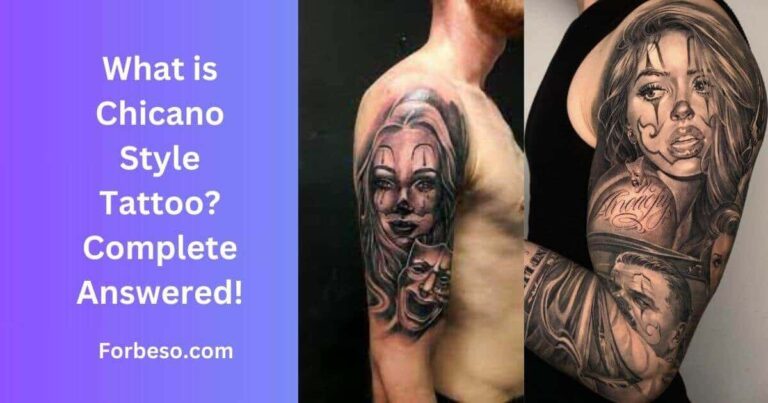The Chicano style tattoo represents Chicano culture which is the identity of Mexican Americans. It shares the contribution of Mexican Americans to the growth of America. The Chicano tattoo covers the heritage of the community with a tattoo style that people still use to express Chicano movement. Chicano movement has the purpose to address the rights of the Mexican American migrants in the 1960s. The Chicano tattoo style became popular in prisons through homemade tattoo machines and black ink. So, what is Chicano Style tattoo? Chicano style tattoos cover the unique elements of the Chicano people through symbolism, realistic portrait, gang association, artists, and encounter evolution over time. Every Chicano style tattoo has meaning and representation towards a movement. The symbolism includes roses, Virgin Mary, cross signs, inspirational people, and loved ones. You can also find the fusion of English and Spanish cultural elements in Chicano style tattoos like art, music, food.
In this read, Forbeso shares detailed information about Chicano tattoo and the changes in this style under different influences.
Pachuco Tattoo
The Pachuco gang in the 1940s created Chicano style tattoos. It is a valuable Mexican American culture part that includes a stylish man in a suit that plays a significant role in the Chicano movement. The pachuco cross is the representation of unity, pride for the Chicano community. The pachuco cross is the sign of a member that exists on the left hand in between the thumb and index finger. In the history of Chicano, the pachuco cross used to represent the part of the Chicano community that faced resistance from social norms. The tattoo is on the hands for association that is pachuco cross with three Lines, four lines or five lines around it.
Chicano Tattoo Artists
Chicano tattoo artists are valuable and popular among tattoo enthusiasts. These artists value the unique elements of Chicano and preserve the culture through their work. Chuco Moreno is a black and gray tattoo artist that covers unique Chicano elements like low riding and west coast Chicano lifestyle. An east Los Angeles based tattoo artist named Freddy Negrete is famous for black and gray tattoo style with Chicano roots. Freddy works have association with the bible and he became a pastor of his church. The work of Freddy Negrete focuses on gangs or guns, but he does tattoos of personalities, masks, and Greek mythologies. Chuey Quintanar is another American Latino tattoo artist that works with Hollywood celebrities like Travis barker that masters in Chicano style tattooing.
Cultural References
The Chicano style has the diverse style of expression that is due to migrants from Mexico to the California state. The initial immigrants encounter different hardships like basic rights issues and discrimination. The migration reached its peak in 1940’s and the immigrants tried their best to fight for their rights. The zoot suit riots incident also impacts the political situation in the United States to suppress their culture. Khakis and bandanas became the new choice after pachuco.
The artist gets inspiration from the life experience of the gangs in prison. The Chicano tattoo covers the struggles and freedom that become a part of mainstream media over time. The community inspires through Chicano art that expresses the struggles of their ancestors for freedom. The emotional and two face tattoo designs also represent the struggle and achievement of the community. Payasa is a popular female clown that has a strong stair and smiles. Payasa became the representation of Los Angeles. You can find the Christian roman catholic elements in the Chicano art because more than 80% of Mexican practice Christianity. Read about Body Piercing Definition and Types now.
Chicano Art Movement
The Chicano Art Movement has a long history and has a major impact in the history of the United States which started in the 1960s. There are several artists, photographers, painters, and sculptures that participate in this movement. The artwork of Diego Rivera, José Clemente Orozco, Frida Kahlo, and Frank Romero have significance. The work of Frida Kahlo resulted in the Mexican revolution of the 20th century. Frida Kahlo’s self-portrait expresses self-identity, culture and struggles that inspire other Chicano artists.
José Clemente Orozco paintings cover the moralism that covers social and political themes of Mexico. Diego Rivera is another well-known muralist and a party member of the Mexican Communist Party. Diego Rivera married another artist Frida Kahlo that influenced their art. Rivera’s famous artwork include The Flower Carrier, Pan American Unity, Man at the Crossroads and Detroit Industry Murals. You can find the tattoo design elements from Chicano art movement in black and gray style.
